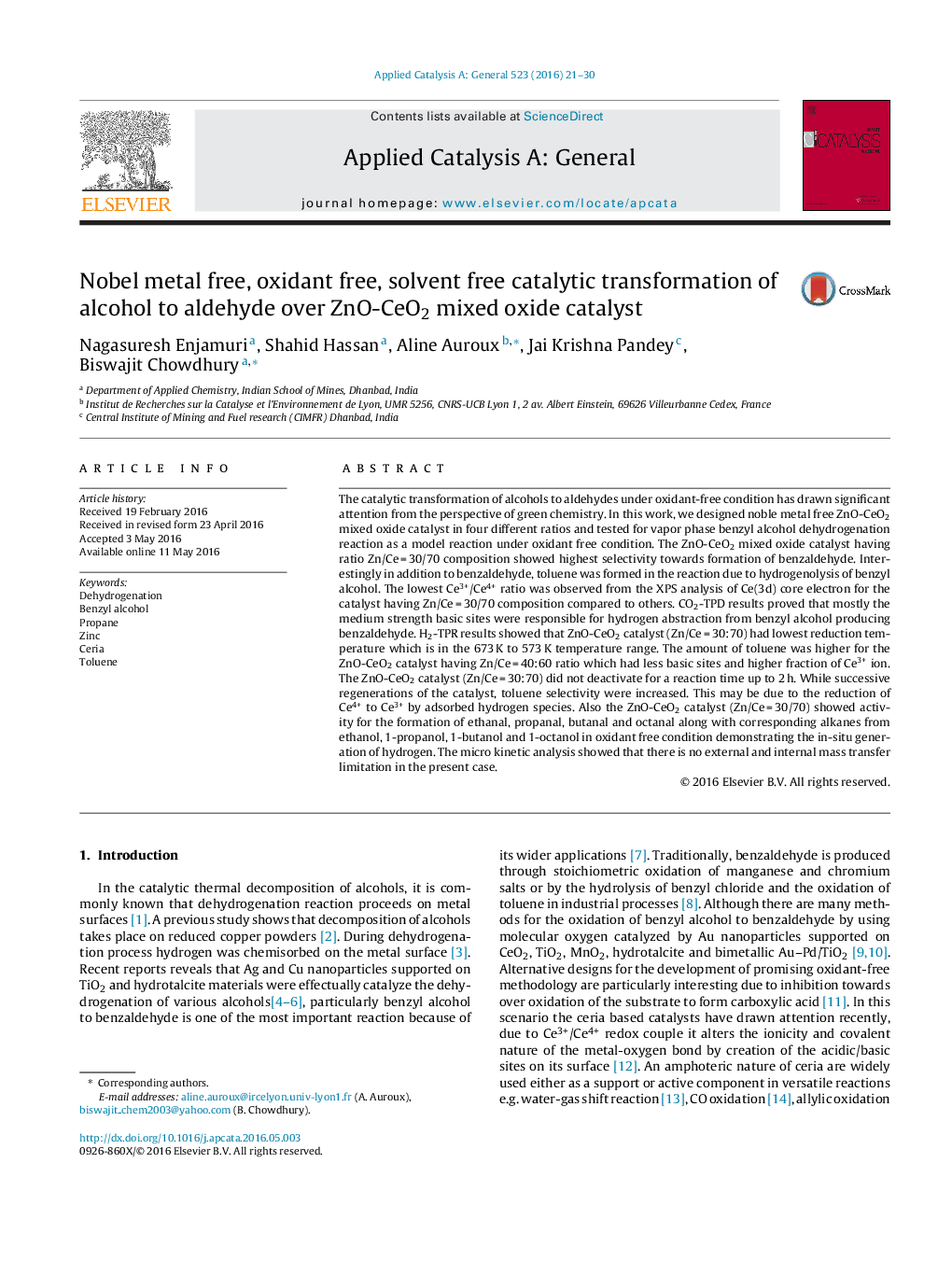| کد مقاله | کد نشریه | سال انتشار | مقاله انگلیسی | نسخه تمام متن |
|---|---|---|---|---|
| 38748 | 45790 | 2016 | 10 صفحه PDF | دانلود رایگان |

• Noble metal free catalyst for alcohol dehydrogenation.
• Reaction in Oxidant free condition.
• Formation of alkanes from primary alcohol.
• No mass transfer limitation.
The catalytic transformation of alcohols to aldehydes under oxidant-free condition has drawn significant attention from the perspective of green chemistry. In this work, we designed noble metal free ZnO-CeO2 mixed oxide catalyst in four different ratios and tested for vapor phase benzyl alcohol dehydrogenation reaction as a model reaction under oxidant free condition. The ZnO-CeO2 mixed oxide catalyst having ratio Zn/Ce = 30/70 composition showed highest selectivity towards formation of benzaldehyde. Interestingly in addition to benzaldehyde, toluene was formed in the reaction due to hydrogenolysis of benzyl alcohol. The lowest Ce3+/Ce4+ ratio was observed from the XPS analysis of Ce(3d) core electron for the catalyst having Zn/Ce = 30/70 composition compared to others. CO2-TPD results proved that mostly the medium strength basic sites were responsible for hydrogen abstraction from benzyl alcohol producing benzaldehyde. H2-TPR results showed that ZnO-CeO2 catalyst (Zn/Ce = 30:70) had lowest reduction temperature which is in the 673 K to 573 K temperature range. The amount of toluene was higher for the ZnO-CeO2 catalyst having Zn/Ce = 40:60 ratio which had less basic sites and higher fraction of Ce3+ ion. The ZnO-CeO2 catalyst (Zn/Ce = 30:70) did not deactivate for a reaction time up to 2 h. While successive regenerations of the catalyst, toluene selectivity were increased. This may be due to the reduction of Ce4+ to Ce3+ by adsorbed hydrogen species. Also the ZnO-CeO2 catalyst (Zn/Ce = 30/70) showed activity for the formation of ethanal, propanal, butanal and octanal along with corresponding alkanes from ethanol, 1-propanol, 1-butanol and 1-octanol in oxidant free condition demonstrating the in-situ generation of hydrogen. The micro kinetic analysis showed that there is no external and internal mass transfer limitation in the present case.
Figure optionsDownload high-quality image (253 K)Download as PowerPoint slide
Journal: Applied Catalysis A: General - Volume 523, 5 August 2016, Pages 21–30